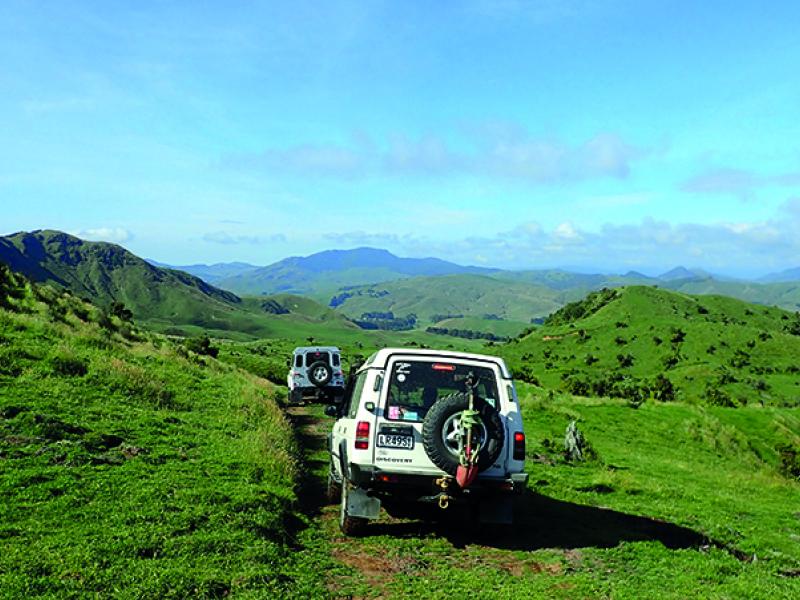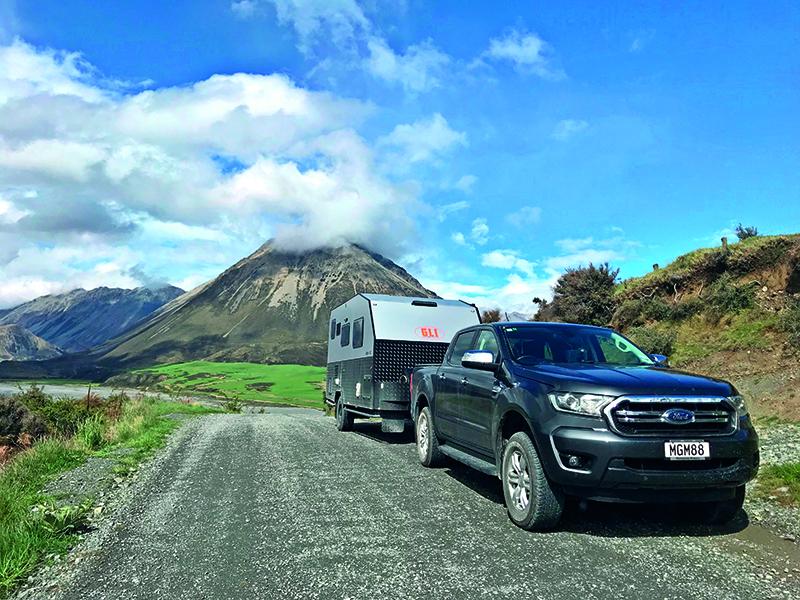Evidence of the role gold played in ‘seeding’ a fledgling New Zealand from the 1800s is still very much there to be discovered in Central Otago, one of 4x4Explorer main man Richard Soult’s favourite places.
At 4x4Explorer, we’ve lived in New Zealand, the UK & France, and have Overlanded extensively throughout Europe.
There are major attractions in Europe, the cultural diversity, languages, food, history, etc. Yet we keep coming back home to New Zealand. Why?
As Overlanders and Kiwis, we are just as interested in the people that we meet as the terrain that we cover. I believe that what makes New Zealand special, is its people. We are a special breed here and despite being a young nation, have an extremely rich history. We have seen through the Covid crisis, that we are a team of five million and what a team! I strongly believe that we owe a lot of this to our forebears. The “she’ll be right”, Number 8 wire, salt of the earth people that most Kiwis are today.
The golden mean!
Where’s this all going? In New Zealand, we truly have some of the very best Overlanding in the world. In Europe, most of the routes were built throughout various conflicts as countries and empires moved borders. In New Zealand it was all about discovery and mainly for gold!
Fantastic legacy
The gold rush in New Zealand started in Central Otago, which remains today, one of the very best overlanding areas in the world. We owe a huge debt to the early goldminers for leaving us this fantastic legacy which we still enjoy today.
When, in 1861, Gabriel Read, a prospector from Tasmania, discovered gold near the Tuapeka River, his dicovery sparked the country’s first major gold rush. News travelled quickly and thousands of diggers rushed to what is now know as “Gabriel’s Gully” near Lawrence, hoping to strike it rich.
Many came across the Tasman from the gold fields of Victoria and along with them came business people and “entertainers”.
This provided a major boost to the Otago economy and saw the growth of Dunedin as a major port and economic centre. At one stage, Dunedin was the largest and richest city in New Zealand.
The Old Dunstan Road
As Dunedin expanded, and more prospectors arrived, tracks were built to provide access to the ever expanding gold field around Dunstan (now known as Clyde). One of the most historic of these tracks is the Old Dunstan Road, also known as the Dunstan Trail and the Mountain Road.
The road was built in the early 1860s and was the most direct route (175 kilometeres) avoiding dangerous rivers that a low level route would have faced. Whilst being direct, the road crosses four mountain ranges and was extremely exposed. By 1862, coaches were travelling the route from Dunedin to Dunstan, however the route was often unpassable in the winter.
The unique nature of the Central Otago geography and climate meant that this route was extremely treachorous due to sudden changes in weather. With a southerly blowing, the journey must have been miserable! The track rises to over 1000m and many travellers fell by the wayside attempting to reach Dunstan.
Although at one time, there were many hotels and “grog” shops, very little sign of human occupation remains, save for the odd stone hut and the Serpentine Church with its interesting history.
High & mighty
Built in 1873, the church was the highest in New Zealand. It is said that the day it opened, the preacher was late and that the locals descended on the local pub, returning drunk for the service. After the first hymn, the rowdy congregation demanded an “encore”. The preacher was not amused...
Gold was later found in the Oteake, at Guffies Creek and on the flanks of Mt Buster. At an elevation of 1200 metres the Buster Diggings became the highest in the country. Today, the landscape around the diggings is surreal with the exposed white quartz and unusual land forms. On a sunny day and with a careful camera angle you could imagine that you were in a desert.
Station mastery
Perhaps one of the most interesting buildings in Central Otago, is the Ida Railway Hut. As the name suggests, this Hut was once a railway station in the Ida Valley. In 1975, the station was moved to its current location, above 1400 metres, to be used as a musterers’ shelter.
I have no idea how they managed to move it to it to its current location by road and is definitely something you will only find in New Zealand!
All of these areas are managed by DOC and more information can be found on the DOC website.
Despite most signs of early settlements having disappeared, there are some that remain and are well worth visiting.
Living on the Maniototo
St Bathans, with its Blue Lake and famous Vulcan Hotel is like a living museum. The Vulcan has recently changed hands and is a great place to stop for a coffee or lunch. Nearby Naseby (its welcoming slogan is 2000ft above worry level), is a beautiful village with plenty of well maintained historical buildings.
Of course, Naseby is also the New Zealand centre for curling and has an indoor curling facility that is open to the public. Definitely something different to do with the kids or with friends.
I find the name “Naseby” very interesting because of its origins. The “by”, pronounced “bu” in Swedish, means town in Viking, and Naseby is a village in England, famous as the site of a decisive battle in the English Civil War. Funny to think that this small settlement derives its name from Vikings who invaded England and then was transported around the world by the English who settled here.
The Chinese Times
Perhaps less known today is the influence that Chinese miners had during the gold rush. I read somewhere that at one stage, thirty percent of gold extracted in Central Otago was by Chinese prospectors. Little remains today of Chinese heritage, as most were here to earn enough to return home and purchase land, which they did.
Arrowtown has a very well preserved and restored Chinese village which shows how the Chinese community lived during these times. If you’re heading up to Macetown, it’s well worth a visit while you’re airing down.
On the subject of local history, author and previous contributor to NZ4WD, Ray Stone is bringing out “Stories from our Backroads” in which he recounts his Overlanding stories. There will be a book covering the North Island and another for the South Island.
If you would like to pre order these, contact him at storiesbackroads@xtra.co.nz.
For more information on those contact us at richard@4x4explorer.co.nz






